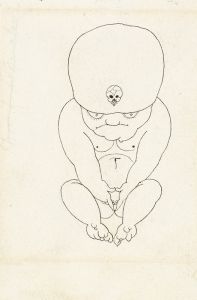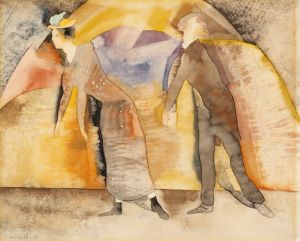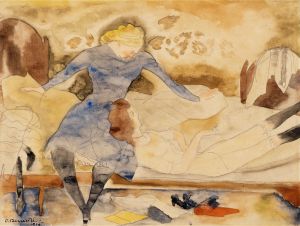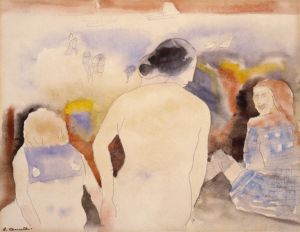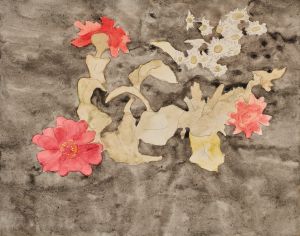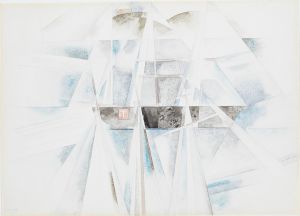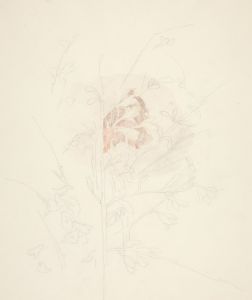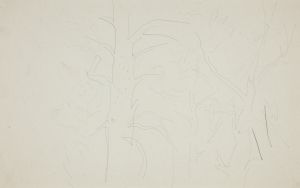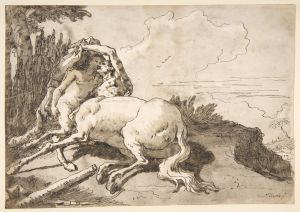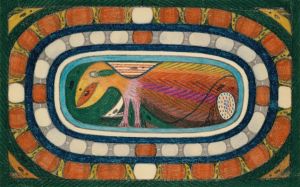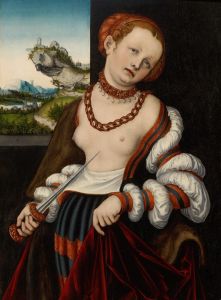
Costume Drawing; Devil As Lady
A hand-painted replica of Charles Demuth’s masterpiece Costume Drawing; Devil As Lady, meticulously crafted by professional artists to capture the true essence of the original. Each piece is created with museum-quality canvas and rare mineral pigments, carefully painted by experienced artists with delicate brushstrokes and rich, layered colors to perfectly recreate the texture of the original artwork. Unlike machine-printed reproductions, this hand-painted version brings the painting to life, infused with the artist’s emotions and skill in every stroke. Whether for personal collection or home decoration, it instantly elevates the artistic atmosphere of any space.
Charles Demuth was an American artist known for his contributions to the Precisionist movement, which emerged in the early 20th century. His work often focused on industrial landscapes and architectural forms, but he also explored other subjects, including costume design and theatrical themes. One of his lesser-known works is "Costume Drawing; Devil As Lady," which reflects his interest in theatrical and costume design.
Demuth was born in 1883 in Lancaster, Pennsylvania, and studied at the Pennsylvania Academy of the Fine Arts in Philadelphia. He later traveled to Paris, where he was influenced by the avant-garde art movements of the time, including Cubism and Fauvism. These influences are evident in his use of bold colors and geometric forms.
"Costume Drawing; Devil As Lady" is a watercolor and graphite piece that showcases Demuth's skill in combining fine art with theatrical design. The drawing depicts a figure dressed as a devil, but with distinctly feminine characteristics, suggesting a playful and subversive take on traditional gender roles and theatrical archetypes. The use of watercolor allows for a fluidity and vibrancy in the depiction, while the graphite provides structure and detail.
Demuth's interest in theater and costume design was part of a broader trend among artists of his time, who were exploring the intersections between visual art and performance. This interest was likely influenced by his social circle, which included many figures from the world of theater and dance. His work in this area demonstrates his versatility as an artist and his ability to engage with different artistic disciplines.
The drawing is notable for its attention to detail and the way it captures the essence of the character through costume. The devil figure is adorned with horns and a tail, traditional symbols of devilish imagery, yet the overall presentation is elegant and refined, highlighting Demuth's ability to blend different elements into a cohesive whole.
While "Costume Drawing; Devil As Lady" may not be as widely recognized as some of Demuth's other works, such as "I Saw the Figure 5 in Gold," it remains an important part of his oeuvre. It reflects his ongoing exploration of identity, performance, and the role of art in society. The piece is a testament to Demuth's innovative spirit and his contribution to the development of modern American art.
Demuth's work, including "Costume Drawing; Devil As Lady," continues to be studied and appreciated for its unique perspective and artistic merit. His ability to transcend traditional boundaries and create works that are both visually striking and intellectually engaging has secured his place in the history of American art.







